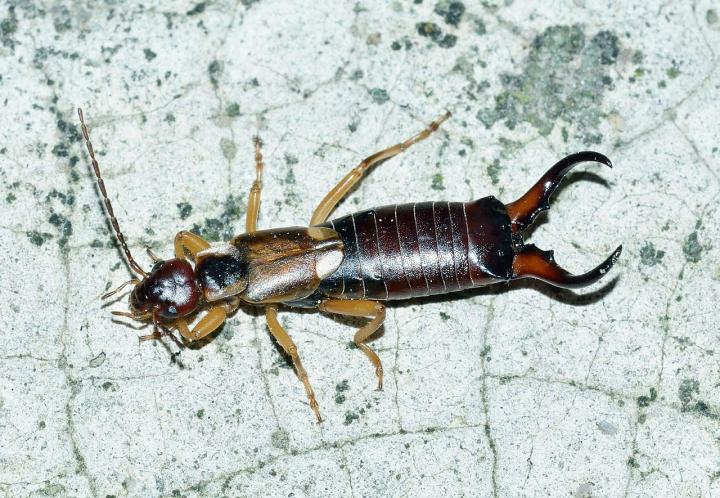
Learn how to get rid of your earwigs or pincher bugs with these tips.
Become a better gardener! Discover our new Almanac Garden Planner features for 2024. It’s easy, fun, and free to try!
Preventing an Earwig Infestation
ADVERTISEMENT
All of these comments are making me itch!!
The next time I kvetch about how I can't grow certain moisture/humidity-loving plants here in the dry So-Calif desert like I did in PA, I will remember these comments.
I got the heebie jeebies!!!
An upturned flowerpot loosely stuffed with straw or similar on a short cane will attract them. You can collect earwigs and feed then to your chickens if you keep them. If earwigs are a problem inside keep your upstairs windows closed in the evening as they’ll fly in.
Don-
That is a wonderful tip, thanks for sharing!
We have a rather large colony of earwigs at our house. They are around the foundation and under the siding. If you bang on the siding they will fall out by the hundreds. So I think they do have colonies. Also we have an old apple orchard and they r in the base of the trees by the hundreds every year
How do I get rid of them up inside the siding of my home?
We had terrible issues with earwigs until I started using diatomaceous earth. Sprinkled it along the edge of our foundation (house and raised garden beds) and the problem was solved almost immediately. And it lasted two years. Only spread it on the ground so no flying pollinators we’re affected. A bit messy but so worth it!
You’ll need to seal, caulk, plug, and close the gaps in areas where foundations meet siding. Also, make sure all seals around doors and windows are tight. Finally, remove any newspapers, boxes, lumber, plants, or debris near the siding. Make sure there are no damp spots in your basement or home for moisture or cover. Earwigs do not actually like to be in human homes but they are attracted by the light. So if you do fix and maintain screens and doors, they will not be able to enter.
Every year earwigs are a severe pest to our flower beds. I try not to water at night because the wet earth makes it worse. This year I have gone out after dark with a flashlight and there are hundreds of them, just swarming my plants. This year I planted flowers such as geraniums and snapdragons because they usually don’t bother them, but now they are destroying them too. I have tried neem oil, dish soap, etc. We have a lot of gardens, but I do go out at night, cup in hand of hot water with dish soap and olive oil and literally push them into the cup, but this year there are just too many
Hi, they're eating my tomatillo fruit and I put a small shallow plastic container beneath the plants, 1/3 of the way filled with canola oil and a few good dashes of fish sauce (cooking variety). The first morning I had dozens of them drowned in the oil. Fish sauce is stinky and attracts them like crazy. No need to put a lid on, they can't escape. I just set it on the ground and water around it. Need to clean it out and replace new oils once the container is filled with them. Their friends and family go right back for more!
I don't know if it will work. But I've been reading up on Horse apples (hedge apples). A friend told me they repel spiders. I started reading about them. They also repel a lot of other insects and some rodents. Plus they aren't toxic for pets. I'm going to try them to keep away the spiders and see if it helps with the earwigs. You can just throw them on the ground around your house. If you want to put some in the house, they say to put them in a bowl or on foil. Because I'm about a week they start to swear their oils. Which is apparently sticky. Another use.... Decoration. According to one article they bring a rustic farmhouse look and feel and last a couple of months or more.
Who would have guessed that. Lol.













